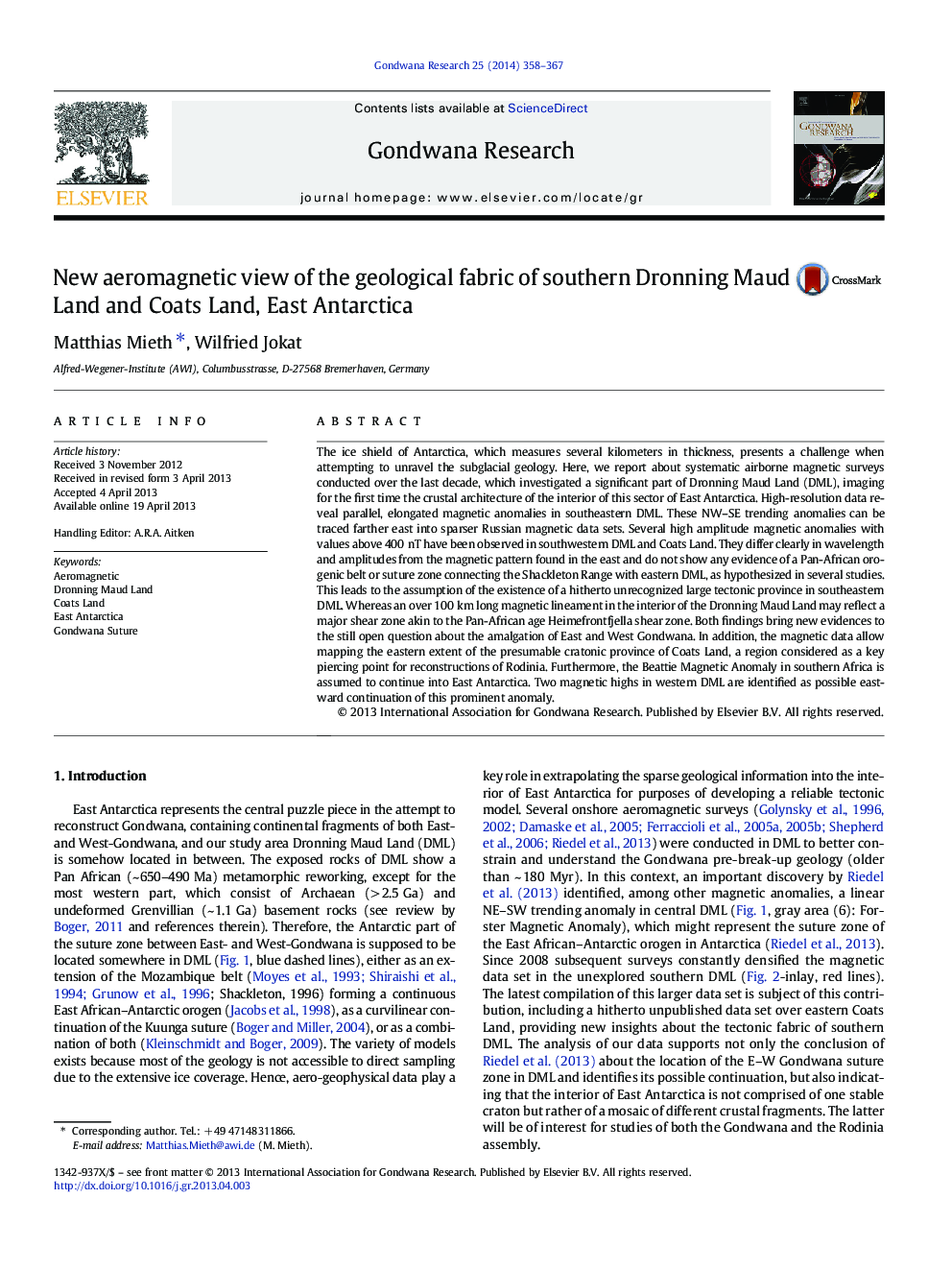| Article ID | Journal | Published Year | Pages | File Type |
|---|---|---|---|---|
| 4727133 | Gondwana Research | 2014 | 10 Pages |
•A yet unrecognised southeastern Dronning Maud Land province has been identified.•The Kohnen lineament may reflect a major shear zone akin to Heimefront shear zone.•No evidence for an orogenic belt between Shackleton Range and Lützow Holm region.
The ice shield of Antarctica, which measures several kilometers in thickness, presents a challenge when attempting to unravel the subglacial geology. Here, we report about systematic airborne magnetic surveys conducted over the last decade, which investigated a significant part of Dronning Maud Land (DML), imaging for the first time the crustal architecture of the interior of this sector of East Antarctica. High-resolution data reveal parallel, elongated magnetic anomalies in southeastern DML. These NW–SE trending anomalies can be traced farther east into sparser Russian magnetic data sets. Several high amplitude magnetic anomalies with values above 400 nT have been observed in southwestern DML and Coats Land. They differ clearly in wavelength and amplitudes from the magnetic pattern found in the east and do not show any evidence of a Pan-African orogenic belt or suture zone connecting the Shackleton Range with eastern DML, as hypothesized in several studies. This leads to the assumption of the existence of a hitherto unrecognized large tectonic province in southeastern DML. Whereas an over 100 km long magnetic lineament in the interior of the Dronning Maud Land may reflect a major shear zone akin to the Pan-African age Heimefrontfjella shear zone. Both findings bring new evidences to the still open question about the amalgation of East and West Gondwana. In addition, the magnetic data allow mapping the eastern extent of the presumable cratonic province of Coats Land, a region considered as a key piercing point for reconstructions of Rodinia. Furthermore, the Beattie Magnetic Anomaly in southern Africa is assumed to continue into East Antarctica. Two magnetic highs in western DML are identified as possible eastward continuation of this prominent anomaly.
Graphical abstractFigure optionsDownload full-size imageDownload as PowerPoint slide
